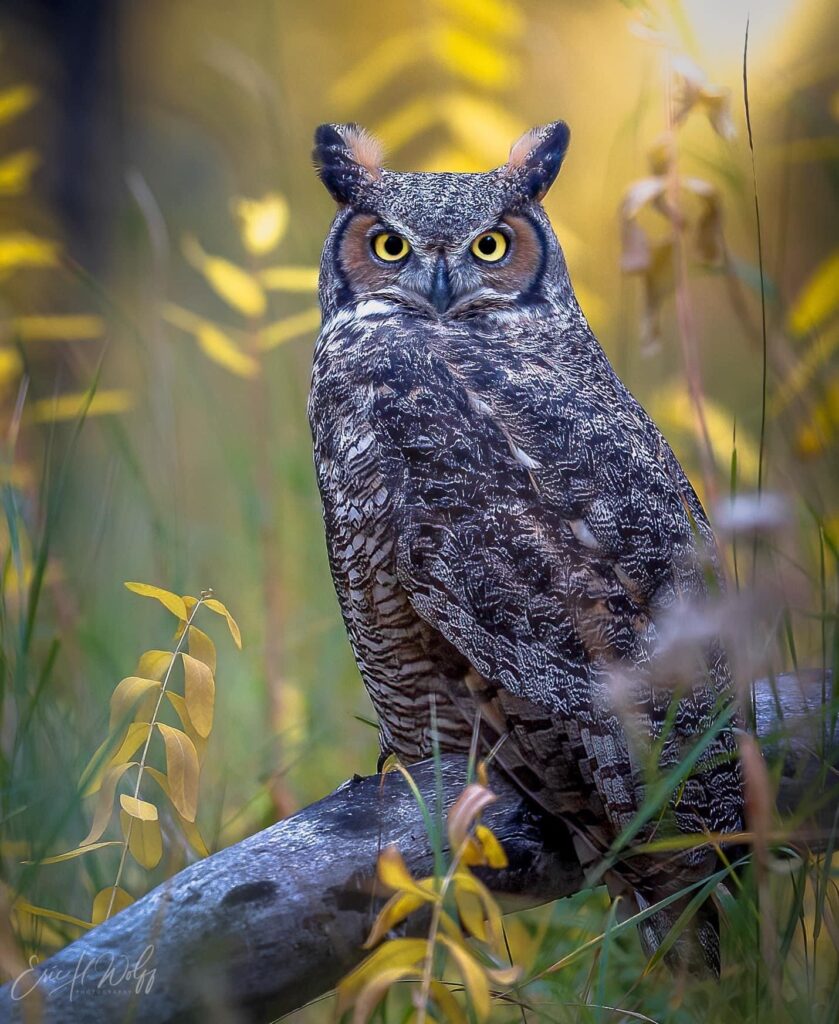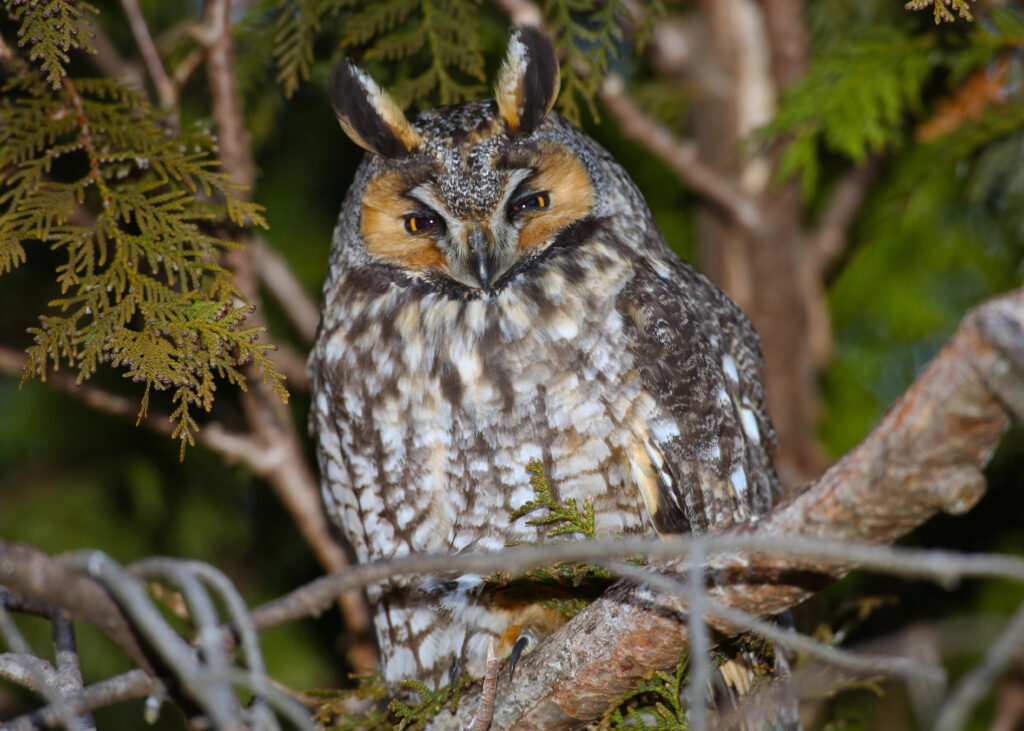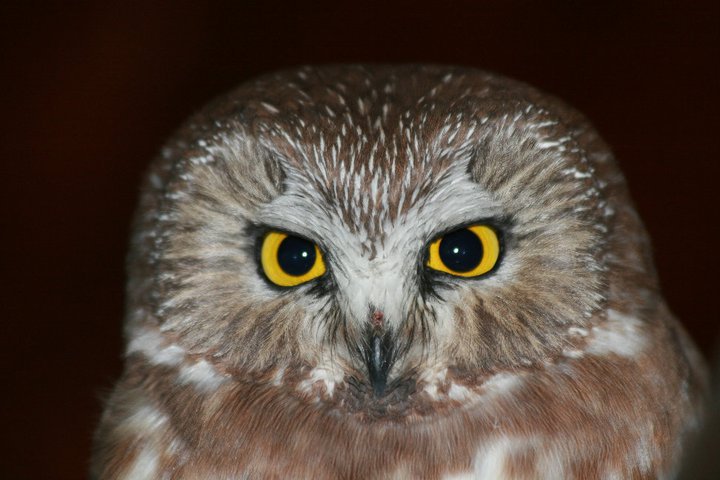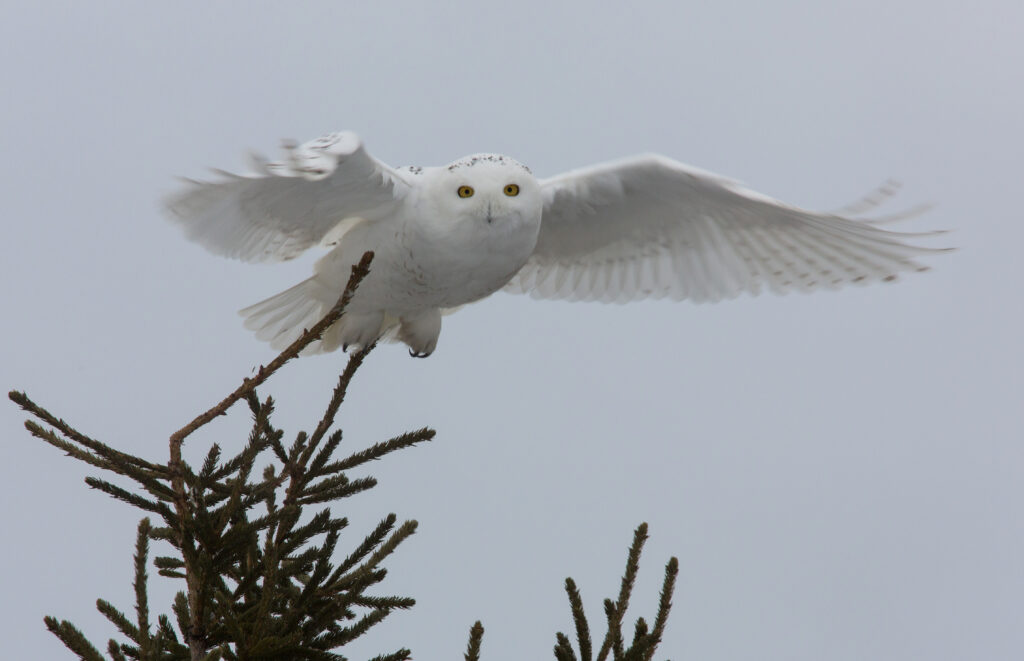While Screech Owls would be the most common owl in south east Michigan, there are other owls that have been sighted and may surprise you with an appearance.
The most likely would be the Great Horned Owl. This very large owl is 22 inches tall with a wing span of 44 inches. They need a large tree that has a flat area for purposes of nesting, such as a broken off main trunk. In the past, there have been a pair that have nested in the field across from The Ford House, the only place that fulfills that nesting need. Food supply in our area is not an issue as Great Horned Owls will eat squirrels, racoons, possum, rats and cats. They are a very successful generalist in their feeding habits. My personal experiences have been responding to the cawing of a group of crows, greeted by them mobbing a Great Horned at the top of my oak tree. In December of 2021, I was serenaded for 25 minutes by a Great Horned that was four houses down, calling for a mate from the top of the neighbors tall pine tree. Great Horned Owls lay their eggs in February so it wasn’t unusual to hear him calling at that time of year.

Great Horned Owl photo courtesy of Eric H. Wolff
Long-eared Owls are far less common as they have been sighted migrating in Spring through this area, but we have not found any reliable winter roosting sites. My experiences with this owl were as a result of another group of corvids, Blue Jays calling and hopping about the cedars in my yard. An inspection of the site resulted in seeing this 15 inch tall owl with long feather tufts, roosting for the day. Long-eared Owls travel beginning at dusk on their way to the northern Lower Peninsula and further north where they nest. Another Long-eared Owl was seen by me at a friends’ home, due north of my house a few years later, sitting on a relatively open branch in the sun. Food supply here in Grosse Pointe would be sufficient as they eat small mammals, a good lesson that poisons should be avoided. These owls like dense cover in the form of cedar trees, which have branches that allow them the spaces they need to roost, yet provide cover from the elements. If you are looking to improve owl habitat in your yard, I would highly recommend a row of native cedar trees.

Long-eared Owl photo courtesy of John Graffius
Saw-whet Owls are very rare although I believe that with regular searching they would be found. They prefer the same habitat as the Long-eared Owls. These eight inch tall owls may look cute because of their size, but they are fierce predators. Food for Saw-whet Owls consists mainly of mice. My only report of this owl was from a customer in 2010. In the middle of a busy Black Friday, a customer and her grandson came in to report a small owl in their garage. After looking at the field guide, he identified it as an Eastern Screech Owl. Later when they returned with a picture, I was shocked to discover the bird was a Northern Saw-Whet Owl. I immediately went to their house to see this rare find in Grosse Pointe! To my surprise, instead of hiding in its natural habitat of dense brush, it was perched on a coiled garden hose in the rafters of the garage.

Saw-whet Owl photo courtesy of Rosann Kovalcik
Snowy Owl is another rare sighting in Grosse Pointe, having been seen along the lake shore at the Ford House and the Grosse Pointe Yacht Club. These birds appear in winter and feast on the plentiful ducks that we have on the lake. The most reliable place to see one is at the Harley Ensign DNR launch site in Harrison Township where one is seen on the break wall on a fairly regular basis in the winter.

Snowy Owl photo courtesy of John Graffius
Have fun searching and listening for these owl species in the neighborhood.
